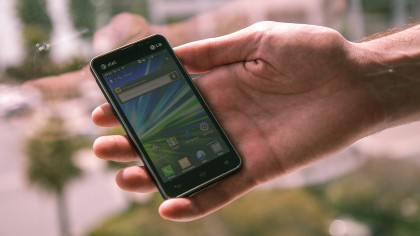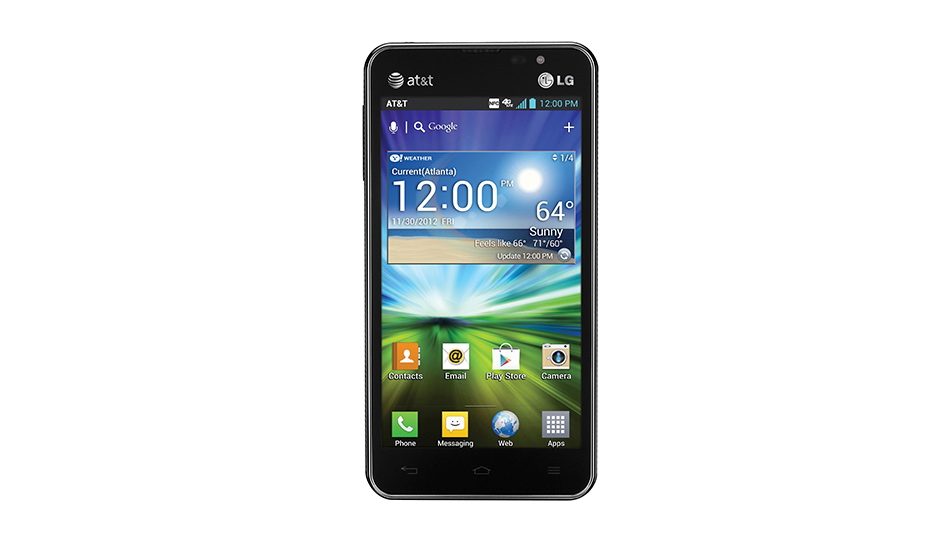TechRadar Verdict
Pros
- +
Great performance
- +
Sharp 4.3-inch display
- +
Slim build feels good
- +
4G LTE service is stellar
- +
Cheap on-contract price
Cons
- -
Can't install apps to microSD
- -
Tiny internal storage
- -
Low-quality camera
- -
Glossy back feels cheap
- -
Heavy AT&T bloatware
Why you can trust TechRadar
It's rare to see a budget handset that seems to check nearly all of the boxes for quality features, which is why we were initially so surprised by the LG Escape. It might not turn heads with dramatic styling, but the Android 4.1: Jelly Bean device delivers strong OS performance, a sharp screen, and a nicely slim build, all backed by AT&T's 4G LTE network.
We weren't terribly surprised to see a mediocre camera included, but still felt like the Escape was better than it really should be for the price. And then we found the near-fatal flaw: A storage limitation that'll prevent users from downloading and using larger apps. For casual app and game dabblers, that may not be an issue, but what about everyone else?
Design
While the glossy plastic backing may turn some off, the shape and size of the LG Escape makes the handset feel great in the hand. Measuring 4.96-inches by 2.54-inches, with a thickness of just 0.37-inches and a weight of 4.5 ounces, the phone is quite slim, and the design feels well considered without being flashy or eye-catching.
The 4.3-inch display comes in at a resolution of 960 x 540 and looks quite good, with crisp text and vibrant colors. Above the screen are glossy silver AT&T and LG logos, along with a 1.3-megapixel front-facing camera, while the bottom houses the soft touch buttons: Back, home, and menu.

We mentioned the back of the phone earlier, as the slightly slippery smooth plastic backing won't be everyone's cup of tea, especially with the reflective checkerboard design. Despite its glossy nature, it fits well with the design of the device, though the large etched LG logo is a bit much. Above the logo is the primary 5-megapixel camera lens, while a small opening for the speaker is found near the bottom left.
The sides, top, and bottom of the phone are also made of black plastic, albeit with a ridged design that almost makes it look like it's rubberized. You'll find a power button on the upper right, a volume rocker on the upper left, and a headphone jack up top. The micro USB port is located dead center on the bottom of the phone.

Powering the LG Escape's zippy performance is a dual-core 1.2Ghz processor backed by 1GB RAM, and the result is speedy movement around the OS, quick transitions between menus and apps, and notable games running smoothly and without slowdown issues.
The storage issue is a huge disappointment, though. The Escape only comes with 4GB of internal storage, a good chunk of which is taken up by Android and various preloaded apps. Less than 2GB is actually available for your use, though the Escape supports microSD cards of up to 32GB in size.

None of that would be a huge issue for a budget device if apps could be installed or moved to the external storage, but that's not the case. Advanced users might be able to root the device and find a workaround, but the average user will simply be unable to download larger apps and games – really anything larger than a few hundred MB, as you'll need enough space to both download and install an app.
We simply can't figure out why LG would cripple its handset in such a way. Even the much-lower-end LG Venice on Boost Mobile lets you install apps to the microSD card, and that's half the phone the Escape is in many other regards.

Price is one of the biggest perks of the LG Escape, as the device can be had for just $0.99 with a two-year agreement. For AT&T users that are willing to sign a new contract but don't want to make a big upfront commitment, the Escape has several highlights, plus it's an LTE device with Jelly Bean that'll only cost you a buck on day one. But that storage issue can't be ignored.
